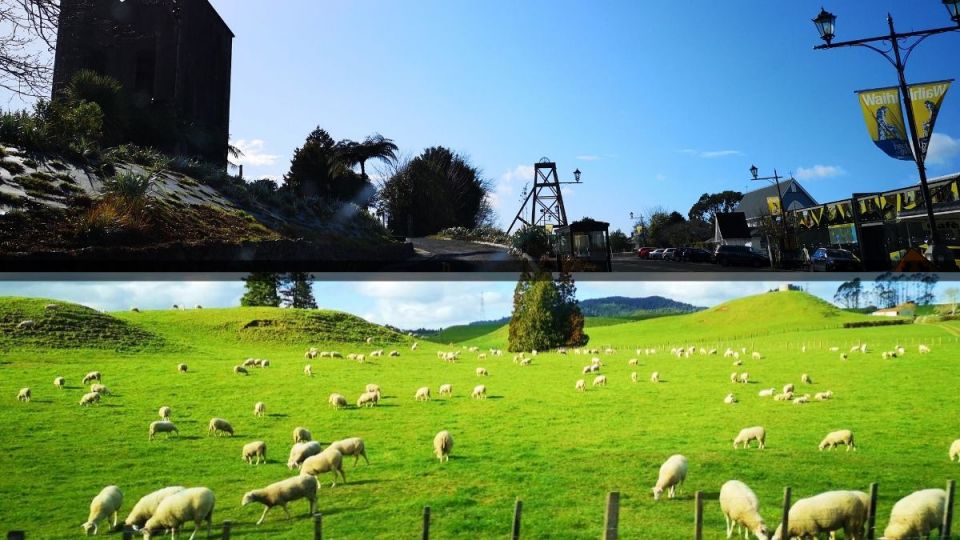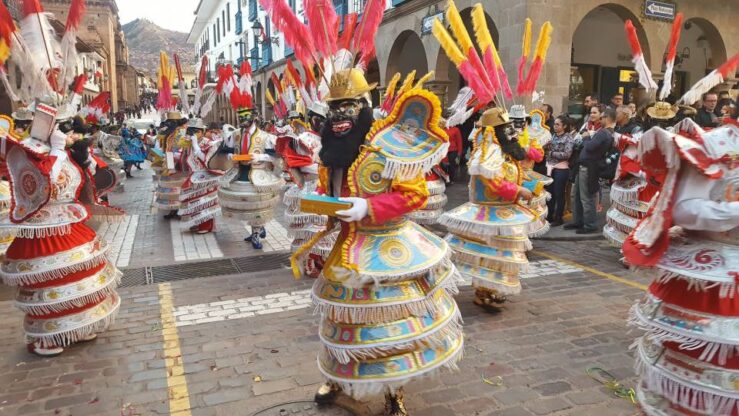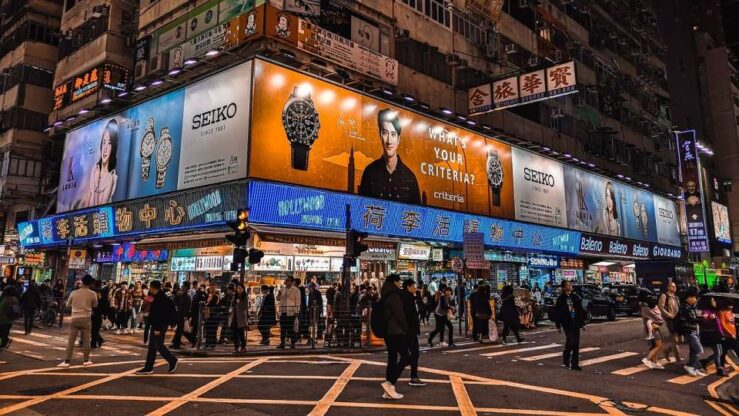Cities & Things to Do in New Zealand North Island in 8 Days
DAY 1: Auckland – Museum & Views
DAY 2: Bay of Plenty – Gold Mine & Hot Pool
DAY 3: Coromandel – Hot Water Beach & Cathedral Cove
DAY 4: Mount Maunganui, Tauranga
DAY 5: Rotorua – Māori Village & Sulphur Bay
DAY 6: Lake Taupo
DAY 7: Tongariro Alpine Crossing or Hobbiton
DAY 8: Wellington or Waitomo Glowworm Cave & Hamilton
Your New Zealand North Island trip will include some of the most interesting cities and towns, breathtaking landscape, natural wonders, indigenous culture and a bunch of other cool things to explore and do – whether you arrive in summer or winter.
The North Island is a good option in New Zealand regardless of the time of the year you choose to travel, whereas the South Island with its colder climate probably will be better for a spring/summer/autumn trip. Contrary to this, the climate on the New Zealand North Island is mild enough, in particular in the north-eastern part, to plan the trip independent of the season. Remember that New Zealand covers three climate zones: subtropical, temperate and cool/mountain. Our suggested route will lie on the border between subtropical (Auckland and the northern part of the Coromandel Peninsula) and temperate climate.
This North Island itinerary is based on our own experience with North Island cities, beaches and other places to visit & things to do in the North Island in winter (July being a winter month in New Zealand / the southern hemisphere). Nevertheless, it additionally includes a few things (especially Day 7) you may also consider, if you visit at other times of the year. The itinerary can therefore be used all year round – regardless of season.
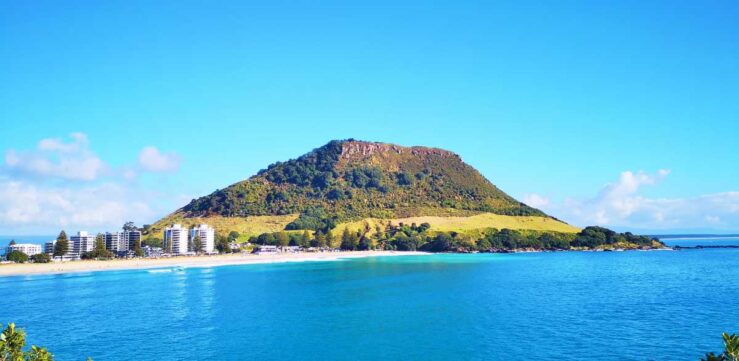
Photo: Travel In Culture
The 8-day itinerary covers a lot of the major sights and a couple of bigger cities on the New Zealand North Island – with a few options to choose between, depending on whether you will both arrive in and depart from Auckland – or whether you will continue to Wellington (and maybe the South Island afterwards). You will need a (rental) car for this trip.
DAY 1: Cities & Things to Do in New Zealand North Island – Auckland
You will start your New Zealand trip in Auckland – one of the must-see cities on the North Island where you will find lots of things to do.
First things in the morning you will pick one of the great Auckland museums to learn about the New Zealand heritage, for instance the Auckland Art Gallery Toi o Tāmaki with outstanding collections by New Zealand, Māori and Pacific artists, or Auckland Museum if you are more interested in New Zealand’s cultural background.
Auckland Museum focuses on the indigenous Māori and the Pacific people. It tells the story of New Zealand, the people, their heritage and cultural background, and gives an understanding of the traditional way of life. 2,000 Māori artefacts are uniquely on display here. It is one of the most impressive collections of Māori and Pacific treasures.
The museum is a good introduction to the Māori culture, which you will get a deeper insight into in a few days’ time at Rotorua.
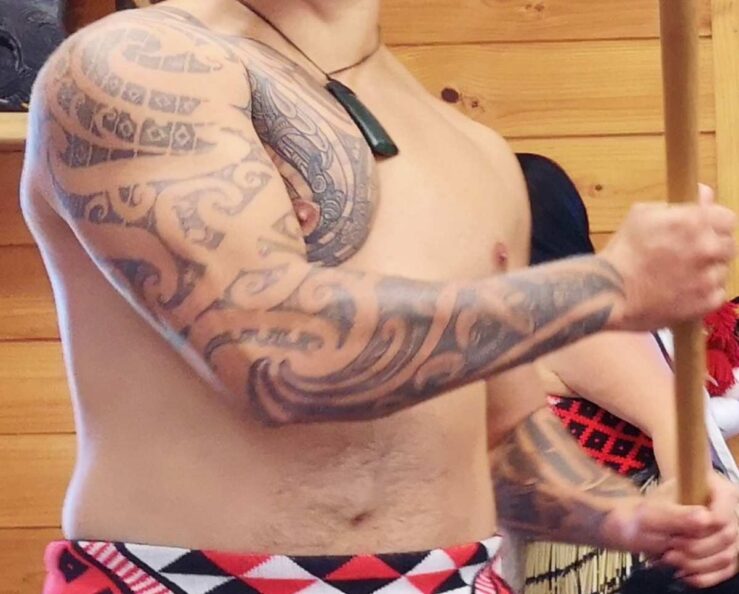
Photo: Travel In Culture
Auckland Art Gallery Toi o Tāmaki is an excellent gallery, home to artworks from both New Zealand and other Pacific locations in addition to international art. It is the largest art museum in New Zealand or Aotearoa. The collection includes over 17,000 artworks representing the history of New Zealand, as well as both modern and contemporary art. Also Māori and Pacific artists contribute to the exhibitions.
Rotorua
Beer price New Zealand/your country
Road safety New Zealand/your country
Here you will soak up the ambience of the vibrant city with its mix of shopping and restaurant options. Entertainment, fashion, harbour, waterfront precincts – as one of the lively cities in New Zealand, Auckland has it all! Take your time to have a bite to eat and stroll around to get a feel for the city. You may alternatively want to save your appetite for a Sky Tower experience!
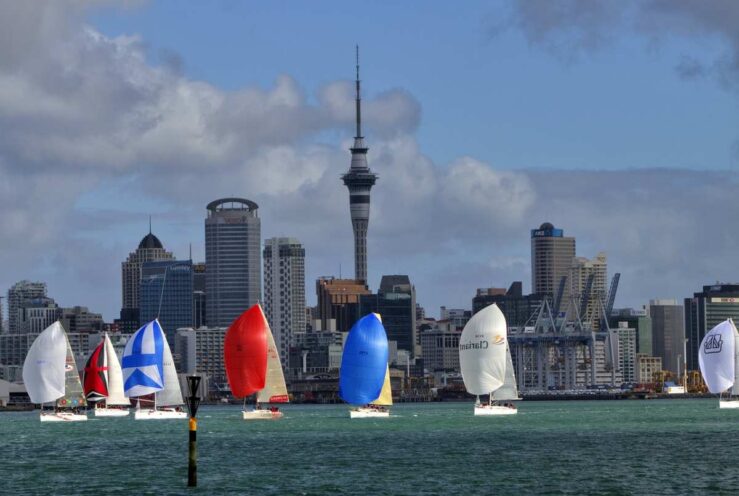
Auckland Sky Tower and skyline | Photo: Holger Detje / Pixabay
Next, you may want to ascend the Sky Tower to get awesome views of Auckland and the harbour.
328 m (1,076 ft) tall, the telecommunications and observation tower with a unique design is an icon of Auckland’s skyline. Moreover, it is the 25th tallest tower in the world. That is why it was designed to be both wind-resistant and earthquake-resistant. Today, it is one of Auckland’s real draws, receiving about 1,150 visitors per day.
Here you can enjoy the panoramic views up to 80 km (50 miles) in all directions. A rotating restaurant as well as a café can be found at the top offering stunning views with your meal. If you haven’t eaten yet, you may definitely consider the Orbit 360° Dining for an outstanding experience!
Now it is time for an easy 2 km (1.2 miles) walk up to Auckland’s highest natural point, Mt Eden. It is a dormant volcano, in the Māori language also known as Maungawhau. Its last eruption was about 15,000 years ago, leaving a crater 50 m (160 ft) deep.
Mt Eden is located 5 km (3 miles) from the city. From the lush volcanic cone you’ll get a scenic 360-degree view of Auckland, 196 m (643 ft) above sea level.
A little bit further to the south you will find the One Tree Hill – another volcano – with the same name as the suburb surrounding it. It is a 182 m (597 ft) volcano and memorial place for indigenous New Zealanders, having the Māori name Maungakiekie. The volcano is believed to have erupted about 60,000 years ago.
It has today cultural importance for the Māoris, since it used to be a pre-European Māori colonisation, home to the Te Wai ō Hua tribe from the early 1700s as well as other tribes.
On top of the volcano you will see a stone obelisk, marking Auckland’s centenary commemorations in 1940.
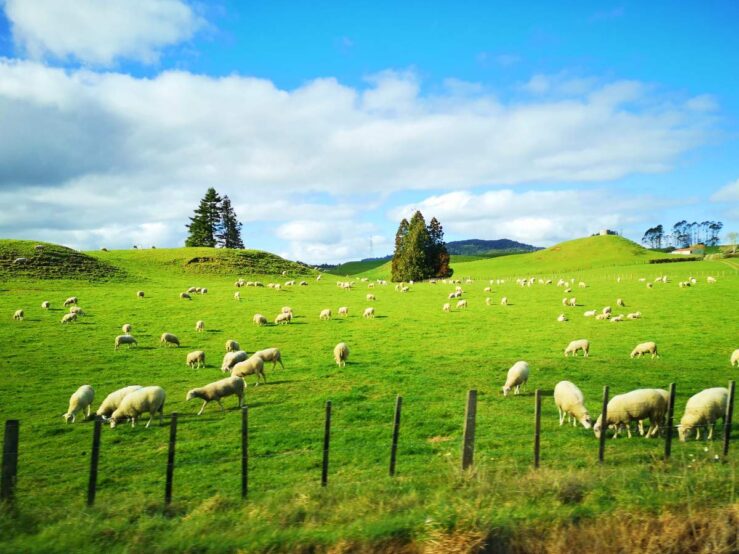
Photo: Travel In Culture
DAY 2: Cities & Things to Do in New Zealand North Island – Bay of Plenty, Waihi
Early morning you will leave Auckland for a 2-hour drive to Waihi south-east of Auckland.
Waihi is a gold town located on the New Zealand North Island in one of the great gold mining districts in the world. Starting back in 1878, it has a 140-year long fascinating gold mining history based on the Martha Mine, claimed by William Nicholl in 1879 – and named after a family member of his.
It was a thriving gold mine industry, which had produced 5.6 million ounces (174,160 kg) of gold, when it was closed in 1952 due to lack of manpower, increasing costs and too low gold prices. Later, mining resumed and became again an important contribution to the regional economy.

The gold mine, Martha Mine, in Waihi still operates | Photo: Travel In Culture
In the 1980s a new open pit started operating above the old underground mine. Additionally, a new underground mine, Favona, is now also in operation. So Waihi is still a fully operating gold mining town!
Near the rim of the Martha Mine you can see the iconic Cornish Pumphouse from 1903, built after the design used in the tin mines in Cornwall in England. It was originally used to dewater the mine.
If you would rather go by yourself, there is also the possibility to walk around the open pit with excellent views of the huge working golden Martha Mine. You will find the Cornish Pumphouse next to it! Both things are close to the town centre.
You are now also quite near Waihi Beach at the very northern end of the Bay of Plenty and at the same time at the foot of the Coromandel Peninsula.
Waihi Beach is a kiwi beachside village on the New Zealand North Island with a very long sandy beach – perfect for surfing and other outdoor activities and recreational things to do! It is a place with a real kiwi holiday vibe (remember that kiwi is both the name of the locals here, the name of the particular New Zealand birds, as well as the well-known fruit grown here at the Bay of Plenty and exported to the entire world) with a pleasant climate relating to the name of the bay: plenty of fruits and everything grown here (kiwis!) due to the warm and temperate climate. James Cook named the bay Bay of Plenty when he arrived in 1769 … precisely due to the plentifulness of everything which he discovered after arriving (fish, timber, fruits…).
Spend the afternoon along the beach – and maybe try the local fish & chips.
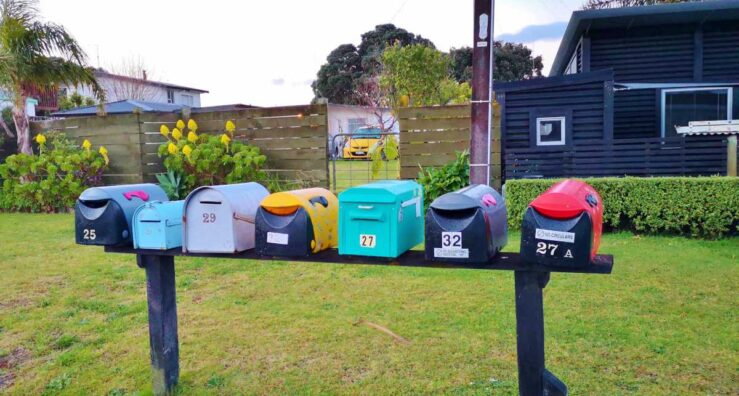
Photo: Travel In Culture
You will not regret finding accommodation here, since it is a pleasant area to stay in on the New Zealand North Island – even in winter – due to the mild climate. You will be surprised by the palm trees and citrus trees full of oranges, lemons and grapefruits. It is a real paradise here – both summer and winter.
There are many options of where to stay between Waihi Beach, Athenree and Bowentown at Tauranga Harbour – whether you go for a Kiwi holiday house, a Kiwi bach, a hotel or staying in a holiday park with hot springs: the Athenree Hot Springs & Holiday Park.
At Bowentown you may stumble upon indigenous history. There is still evidence of the old Māori settlements at this end of Waihi Beach.
If you choose to stay at the Athenree Hot Springs & Holiday Park, you can spend the rest of the day chilling out in the hot natural mineral pools. They contain thermal water with a silky feel. That it is possible to exploit the geothermal water here is due to the location in a volcanic area. It is a result of volcanic activity in this area during the Pliocene era 2 to 5 million years ago. The underground water is still hot and contains dissolved gases of nitrogen and carbondioxide. This is why it bubbles on your skin in the pool. Unlike the ground waters of Rotorua, the water here is not highly mineralised. It has a neutral pH – and does not have any sulphurous smell!
The pools are constantly fed with underground geothermal water from a 250-metre depth. The larger pool is 33-35 degrees centigrade (91-95 degrees Fahrenheit) and the smaller adult pool is 39.5 degrees centigrade (103 degrees Fahrenheit).
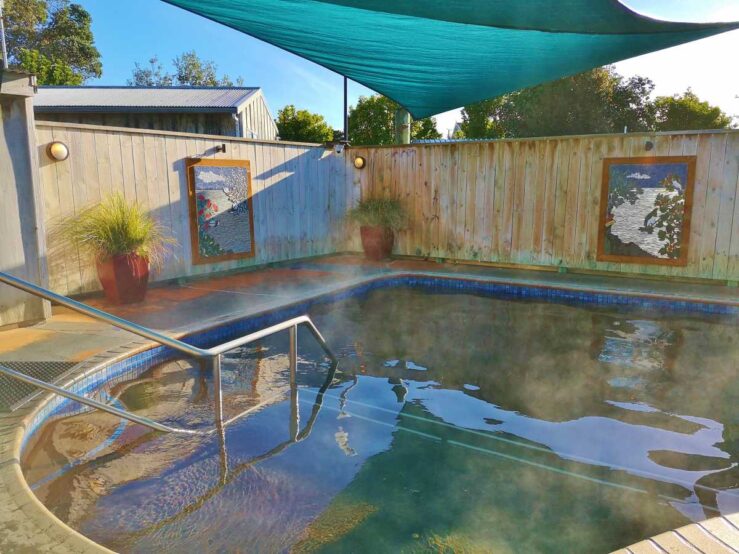
The hot natural mineral pool in Athenree is the perfect place to chill after a long day | Photo: Travel In Culture
There are many things to do on this part of the New Zealand North Island. Around Athenree there are lovely walking tracks like the Trig Walk and the Orokawa Walkway. If you have more days here, you could also consider the Karangahake Gorge Historic Walkway, the Golden Cross Mine Walkway or the Black Hill Walkway.
Athenree features a rich wildlife. You will find excellent opportunities for fishing here! There is also a diverse birdlife around Athenree and Tauranga Harbour. The area is home to, or visited, by a number of native New Zealand birds. Some are migratory. They count Oystercatcher, White-faced heron, Pukeko, Australasian Bittern, Fantail, New Zealand Kingfisher and Tui, and with a bit of luck you may spot them on the Athenree grounds.
At low tide you can also get the special experience of walking directly across to Bowentown.
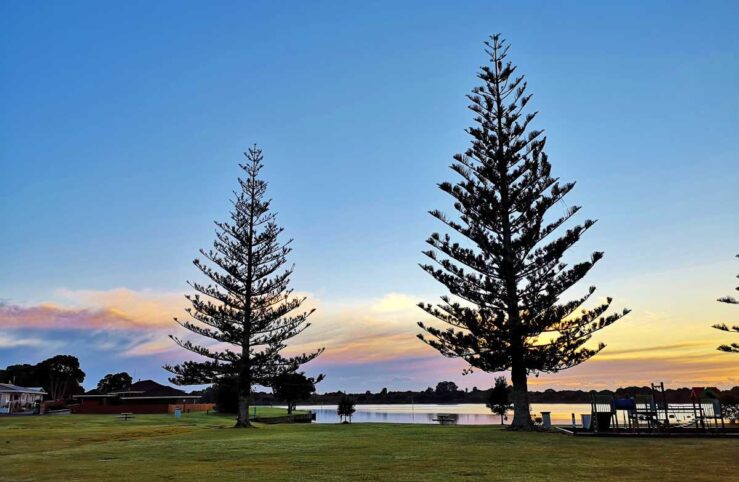
Picturesque Athenree sunset | Photo: Travel In Culture
DAY 3: Cities & Things to Do in New Zealand North Island – Coromandel Peninsula
After a morning dip in the hot pool, you will start today’s trip to the Coromandel Peninsula. It is a scenic and dramatic drive along curved roads, coastal forest, surprising cliffs and interesting vegetation. Be prepared for the wild hens and the occasional loose cow. You may also be lucky to spot many of the native NZ trees here, including the characteristic pohutukawa Christmas tree. The northern part of the peninsula has a subtropical climate!
In case you want to make the full tour of the peninsula, you will have a long day (and do take into account that the roads are winding, so you can’t go as fast as you may think). If not, you can pick a few of the famous locations and stay a little bit longer there, still getting a splendid day in beautiful surroudings! There are awesome secluded lookouts and beaches along the way. We will suggest 3 stops here:
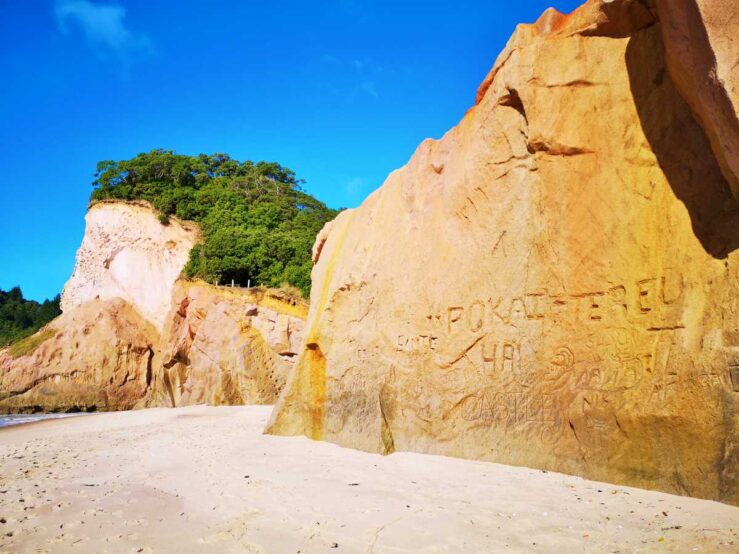
Whiritoa Beach and soft cliffs | Photo: Travel In Culture
You will now be leaving Bay of Plenty. Your first stop will be Whiritoa Beach – in the Waikato area – just half an hour’s drive north of Athenree. On the way you will pass close to the scenic Athenree Gorge.
Whiritoa Beach is a very nice sandy beach with breathtaking views of the seascape and cliffs. Take a morning walk here: there are lots of things to do – explore the cliffs or engage in beach activities – this coastal part of the New Zealand North Island leaves you with a lot of options!
You will be stunned by the occasional black volcanic sand, the fine shells, the soft rocks and beautiful cliffs – here the perfect scene for weddings and photography is set.
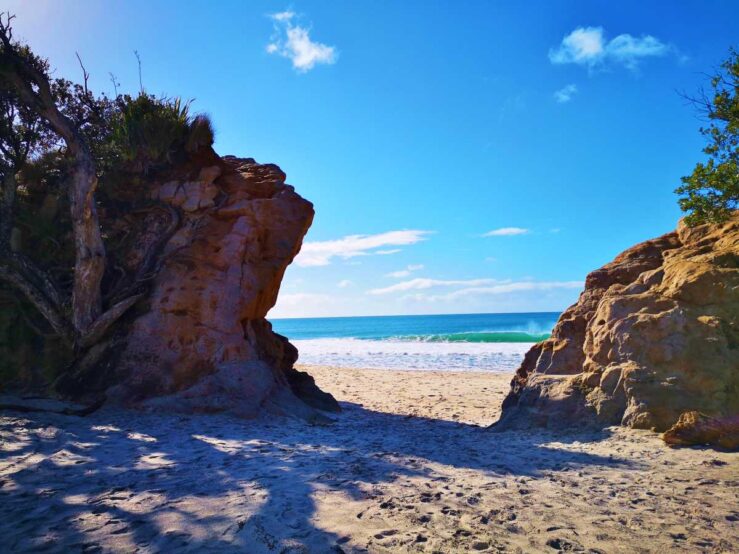
Whiritoa Beach | Photo: Travel In Culture
Your next stop is Hot Water Beach, one of the popular things to do on the North Island in New Zealand. It is a unique opportunity to experience the thermal water rising just beneath the surface of the sand. Check beforehand when it is the low tide – because it is best to arrive within two hours on either side of the low tide to get the optimal experience.
Now you will find the right spot – look where others are digging – or already have dug a hole in the sand. You can now create your own small hot pool on the very beach (you may even have brought a shovel for this)! And don’t forget some awesome photo shoots of your own private natural pool!
Do note that – however tempting it might be – it is probably not a beach for swimming since the currents can be strong here!

Coromandel Peninsula | Photo: Travel In Culture
You will now continue to the famed and iconic Cathedral Cove. It is probably one of the most photographed, dramatic and picturesque sites on the New Zealand North Island!
The Cathedral Cove is accessible only on foot or by boat / kayak. The track to get there is 2.5 km (1.5 mile) long – and takes around 1.5 hour return to complete. You will leave your car at the car park at Pa Road, and continue from here by foot. Right at the beginning of the track, you will also find a viewing deck. It is a scenic walk through the lush forest, undergrowth and pines along the stunning rocky shore and cliff views. An absolutely must-see site on the Coromandel Peninsula!
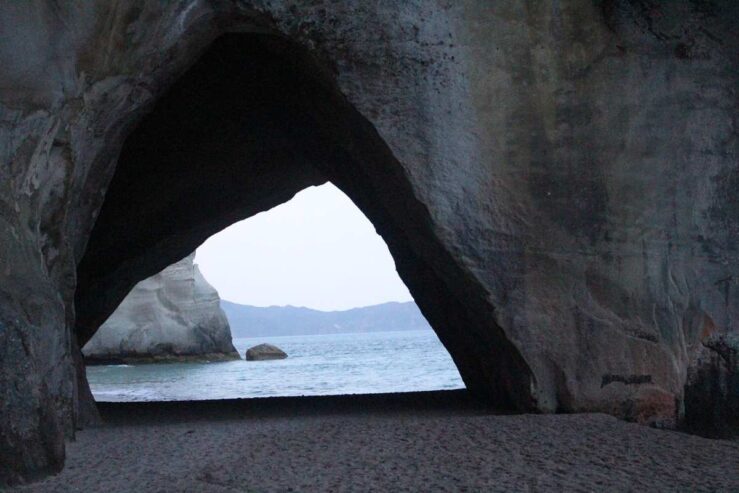
Scenic Cathedral Cove | Photo: Reginas Photos / Pixabay
If you walk in the opposite direction again, you will end at Hahei Beach, a lovely golden, sandy beach. Here you can also rent boats and kayaks to take a closer look at the Cathedral Cove from the sea. You may even be as lucky as to view marine life such as whales, dolphins or seals – and even sometimes penguins.
If you are staying in Athenree, you will when returning certainly want to jump into the hot pool to chill out after your Coromandel trip!
DAY 4: Cities & Things to Do in New Zealand North Island – Mount Maunganui, Tauranga
Today you will visit one of the best beaches on the New Zealand North Island (maybe even THE best according to Tripadvisor), namely the Mount Maunganui Beach at Tauranga – one of the North Island cities.
Today, Tauranga is one of the main cities for business, international trade and culture in New Zealand. You can easily spend a full day in Tauranga – including hiking the volcano Mount Maunganui and relaxing on its beach.
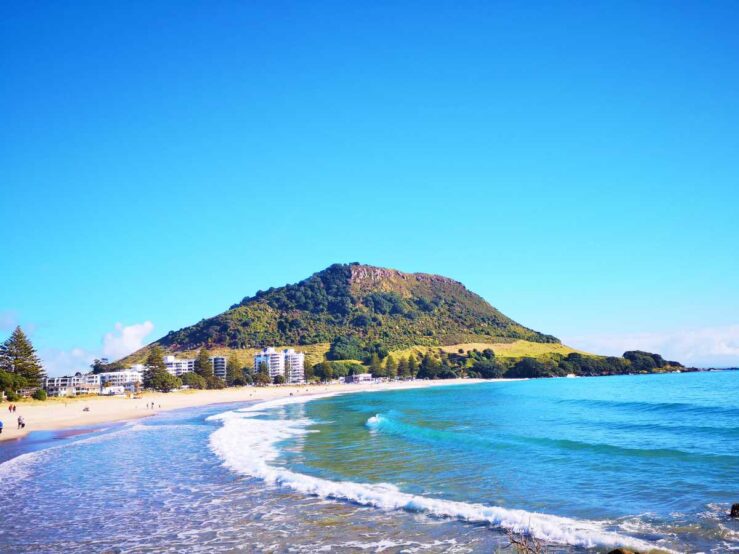
Mount Maunganui at Tauranga | Photo: Travel In Culture
Tauranga, located at the southern end of Tauranga Harbour, is one of the bigger cities in New Zealand (actually the fifth largest city) and the most populous city in the Bay of Plenty. It is an ancient Māori settlement from the 13th century, which was repopulated by Europeans in the early 19th century.
Tauranga is also famous for its Mount Maunganui Beach situated at the foot of the ancient volcano of the same name, Mount Maunganui. Among locals it is just named ‘The Mount’.
Park your car at the beachfront and stroll along the sandy beach with awesome views of the green volcano in the background. Look out for interesting shells – you may be lucky to find some cool Pacific seashells here.

Mount Maunganui Beach | Photo: Travel In Culture
Mauao, Mt Maunganui’s iconic mountain, rises 232 metres (760 feet) above sea level. It is a large lava dome which was formed a couple of million years ago by lava at a gigantic volcanic eruption.
Try a beachside café, play in the white sand, walk out to the small Moturiki Island and take a swim (if it is not too cold a day you are here)! There are really a bunch of appealing things you can do here on the famous New Zealand North Island beach.
Eventually, after a relaxing beach day, you will in the late afternoon continue by car towards Rotorua.
DAY 5: Cities & Things to Do in New Zealand North Island – Rotorua
You will now find yourself in the epicentre of New Zealand North Island volcanic activity at Rotorua – with lots of options and things to see and do to explore the geothermal area.
Rotorua features very unique geothermal phenomena with its seething soil and mud pools, as well as colourful hot pools, steam vents and erupting geysers.
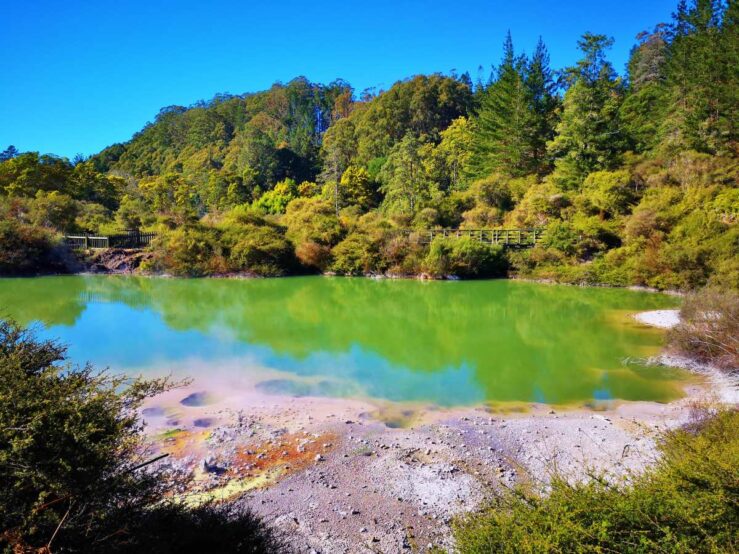
Rotorua | Photo: Travel In Culture
Your will start out in the Kuirau Park.
Stroll through the city park, Kuirau Park, with amazing thermal activity right inside Rotorua. You will soon discover the volcanic steam and other visible signs of the boiling underground.
Next, follow the lakefront and tracks along the Lake Rotorua with the Mokoia Island in the middle. You may even go on a boat tour to reach the island. Shortly, you will arrive at Sulphur Bay.
Sulphur Bay features a unique wildlife of a wide variety of water birds thriving on top of the active geothermal field! The milky water here is both acidic and low in oxygen. Remember to stay on the paths, although it can be tempting to step out to explore the grounds – but that can be very dangerous!

Photo: Travel In Culture
Visiting Rotorua cannot be done without visiting one of the traditional Māori communities here. There are several sites in the city where the Māoris show visitors their traditional way of life. One of these is the Whakarewarewa village. Here you will also be able to see a lot of the geothermal phenomena like geysers, hot pools and boiling mud – all the resources that the Māori people have learned to exploit. You can make a reservation for your visit on their website beforehand to ensure that there are tickets available.
A Māori experience may well end up being one of your top experiences in Rotorua!
Near the Whakarewarewa village you will be able to hike in an awesome Redwoods forest, the Whakarewarewa Forest which is a historic forest for several reasons. If you have time today, you definitely should do it! (Otherwise, you may also postpone it for Day 6 where you could then swap it for the Polynesian Spa experience – or you could stay another day in Rotorua instead of going to Lake Taupo).
The forest has a long and interesting history going back to a volcanic eruption. The eruption of the Mount Tarawera in 1886 destroyed to a large extent the original Whakarewarewa Forest. Moreover, a part of the forest was also at the time cleared by European settlers. The government then began to replace the lost trees and set up a government nursery with seeds imported from other countries in the world. This included in 1901 some Californian Redwoods.
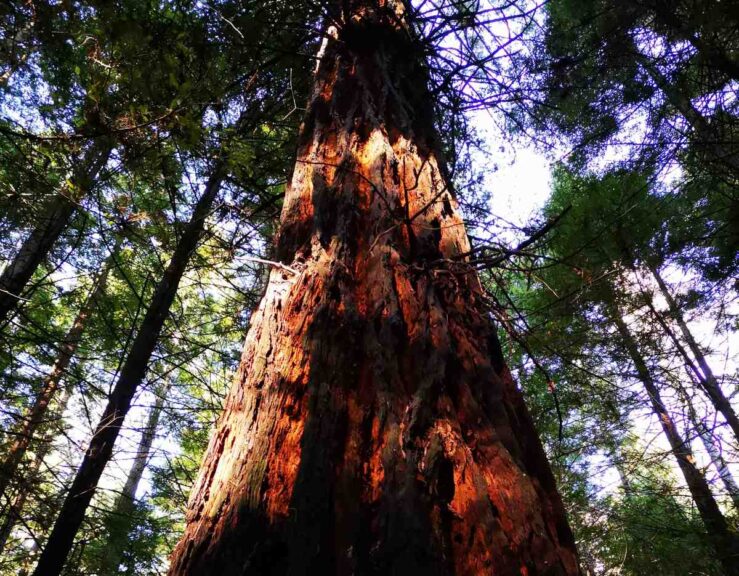
You will find gigantic trees in the Redwoods Whakarewarewa Forest | Photo: Travel In Culture
From 1915 timber could now be harvested, among others for use in the mines like the Waihi Gold Mine.
In 1915 the grove of Redwood trees was now declared a memorial to honour and commemorate the Forest Service members who lost their lives in World War I – and later in World War II, too. In these years a sawmill also saw the light of day here.
Originally, it was the indigenous’ land here. In 1909 the forest land was now returned to the Māoris.
Finally, again in 2013, giant Redwoods were planted in order to preserve this tree species on Earth for posterity.
The latest addition here is the Tree Walk from 2015 – an unusual opportunity to walk the tree tops! If you have time, you may consider doing it!
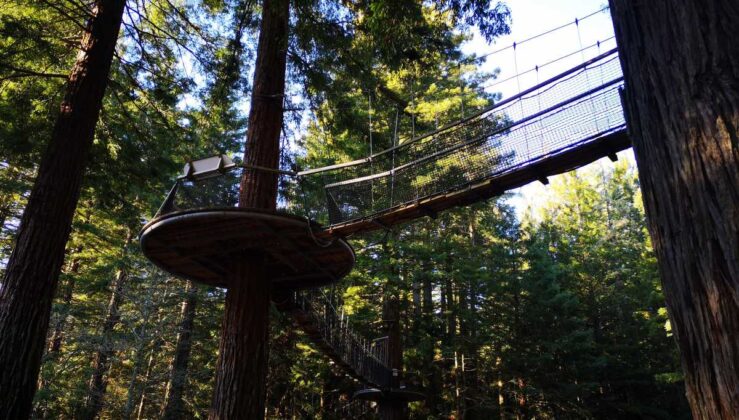
Tree Walk in the Redwoods Whakarewarewa Forest | Photo: Travel In Culture
DAY 6: Rotorua and Lake Taupo
If you feel up to it, you may start your day with a hot mineral water experience in the Polynesian Spa located close to Sulphur Bay. Here the slightly acidic and alkaline natural mineral springs feed into 28 mineral pools for a unique spa experience.
Then it is time to drive to Taupo and the Lake Taupo, an hour’s drive south of Rotorua. As one of the cities at the centre of the New Zealand North Island, Taupo is located on the shore of Lake Taupo.
Lake Taupo was created close to two thousand years ago by a gigantic volcanic eruption. It is the caldera of the Taupo Volcano and New Zealand’s largest lake. Often, it is cold and windy here in comparison with other parts of the New Zealand North Island. It is a magnet for water sports like sky diving, jet boating, bungee jumping, as well as paragliding.
There are lots of things to do in this central part of New Zealand. A few options would be to visit the striking geothermal park and cave Orakei Korako on the way between Rotorua and Lake Taupo, or to see the fascinating Huka Falls just before arriving at Taupo (a bit north of Taupo). Afterwards – in case you didn’t do the Polynesian Spa this morning – you may visit the Wairakei Terraces for a thermal spa experience – just five minutes by car from the Huka Falls.

Breathtaking views of Tongariro Alpine Crossing | Photo: Laura7933 / Pixabay
DAY 7: A. Tongariro Alpine Crossing or B. Hobbiton
Now you will have two options to continue your trip. You will either A. continue further south ending in Wellington (from where you will go home – or maybe continue to the South Island for another week) – or B. continue northbound towards Auckland where you will be ending your trip. So you will choose either 20A and 21A or 20B and 21B for Day 7 and Day 8.
Hike the Tongariro Alpine Crossing (not in winter though – due to weather conditions!). Tongariro National Park, just on the other side of Lake Taupo, is the oldest national park in New Zealand and it is world-famous for its trek, the Tongariro Alpine Crossing, allowing for awe-inspiring and some of the most stunning views New Zealand has to offer.
It is a 19.4-kilometer (12 miles) trek which may be a bit hard (also depending on weather), so make sure you are adequately fit for this journey. You should make a reservation for shuttle transport with a licensed operator (see the website).
It is also here you will be able to spot one of the Lord of the Rings locations Mount Doom (Mt Ngauruhoe). You can check out other New Zealand Lord of the Rings locations – both on the North Island and the South Island.

Take a Hobbiton Movie Set Tour | Photo: Travel In Culture
If you continue your trip northbound, you will be spending Day 7 at Hobbiton doing a Hobbiton Movie Set Tour in the rolling green hills at Matamata in the heart of Waikato with a striking resemblance to The Shire in the hobbit universe as defined by J.R.R. Tolkien! This is the location where The Hobbit trilogy, directed by Peter Jackson, was filmed, beginning in 1999. In the end 44 hobbit holes were dug!
The tour takes you round to hobbit holes, The Green Dragon, the Party Tree and all the other places you know from the films. At the same time you get the story behind and learn interesting details about the production. A must-see for the hobbit addict!
Hobbiton landscape
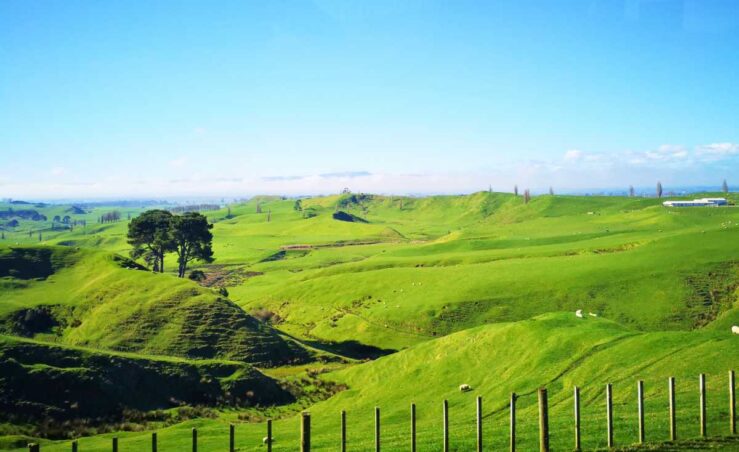
Photo: Travel In Culture
DAY 8: A. Wellington or B. Waitomo and Hamilton
On your last day, Day 8, you will either end in A. Wellington or B. Auckland – depending on your further trip.
Early morning you will drive the approximately 5 hours down to the capital Wellington – another one of the fascinating cities in New Zealand.
So what are the best things you can do to make the most of your day in the ‘coolest city’ in New Zealand? (named the ‘coolest little capital in the world’ by Lonely Planet)
It is easy. You will start out with lunch in one of the great restaurants or casual eateries in the city – maybe in Cuba Street.
You will now stroll down Cuba Street, Wellington’s vibrant pedestrian mall full of fashionable boutiques, galleries and cafés, to get to the Cable Car.
Ride Wellington’s iconic cable car from 1902 up to Kelburn Cable Car Station on the hill for amazing views of the city. Up here you will also find the Botanic Garden as well as a shuttle to the Zealandia Eco Sanctuary.
Wellington
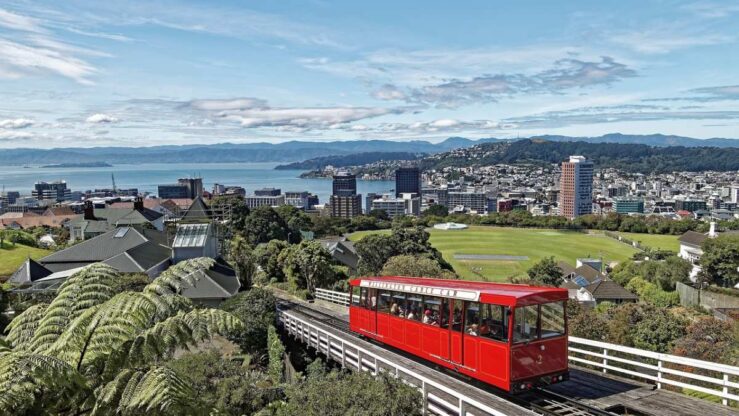
In Wellington you can take the cable car uphill for stunning views of the city and harbour | Photo: Makalu / Pixabay
When back in the city, go for a scenic waterfront walk to reach the Te Papa Tongarewa Museum. It is completely free and open until 6 p.m. (do check the website to be sure).
Te Papa Tongarewa Museum is definitely a must-see in Wellington!
At the end of the day you may be lucky to find a night market (maybe the Cuba Street Night Market with delicious food stalls and the famous craft beer). This is the perfect approach to experience Wellington nightlife!
In case you continue your trip northbound, you will head for the Waitomo Glowworm Caves – slightly more than an hour’s drive from Hobbiton.
The Waitomo Glowworm Caves are unique in that you will get a grotto experience in form of a boat ride past the glow worm-covered cave walls. The caves are approximately 30 million years old!
You will discover thousands of tiny luminescent glowworms in the subterranean universe. You will also be able to explore by foot and see the most stunning stalactites and stalagmites.
Beforehand, do book online – which is absolutely advisable!
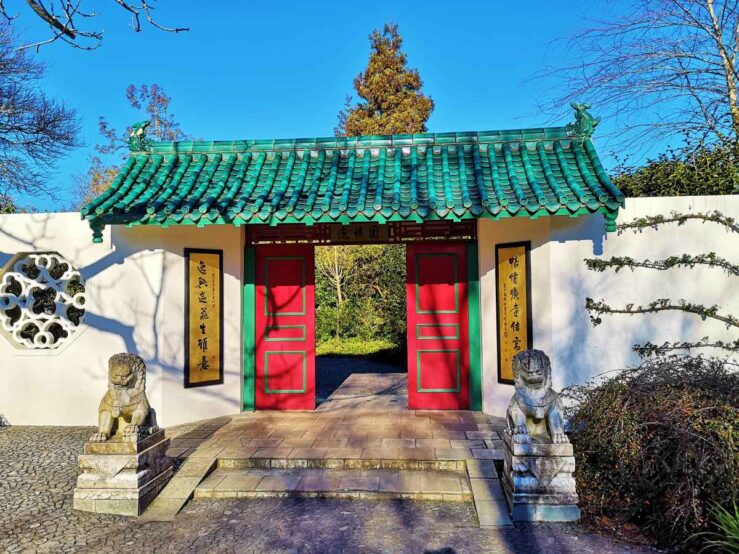
Hamilton Gardens feature gardens from a whole range of different cultures | Photo: Travel In Culture
One hour’s drive north of the Waitomo Glowworm Caves you will arrive at Hamilton Gardens.
The Hamilton Gardens have a unique approach since they tells the story of gardens through different civilisations in the world. Entry is even free!
You will be able to explore the Te Parapara – New Zealand’s first traditional Māori garden, The Paradise Garden Collection including gardens that represent China, England, Japan, America, Italy and India, The Productive Garden Collection, The Cultivar Garden Collection, as well as The Fantasy Garden with The Tudor Garden, Tropical Garden and Concept Garden.
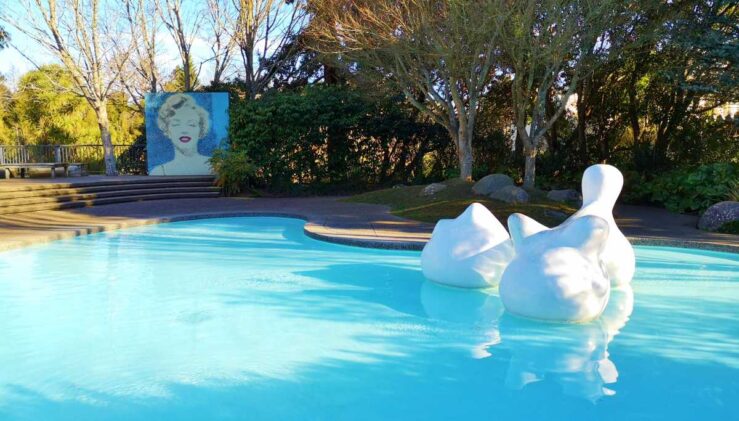
Hamilton Gardens | Photo: Travel In Culture
All in all they represent very different cultures and approaches to gardens – it is a real gem and a popular site to visit!
From here you can do a lovely river walk along the Waikato River to the Waikato Museum of regional art and history in central Hamilton. If time allows, you may also consider popping into the museum (the entry is free here as well).
Finally, in the evening you will head back to Auckland where your 8-day New Zealand North Island trip ends!
Read next Explore Sydney in 4 Days
Find useful travel gear: Travel Essentials
‘Cities & Things to Do in New Zealand North Island’
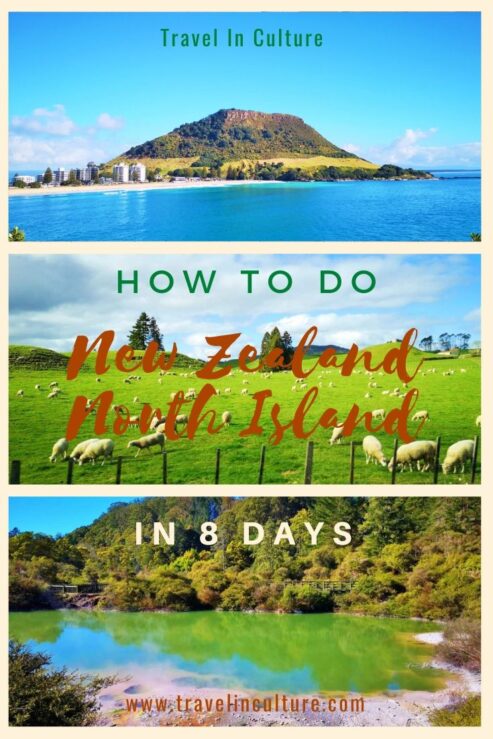
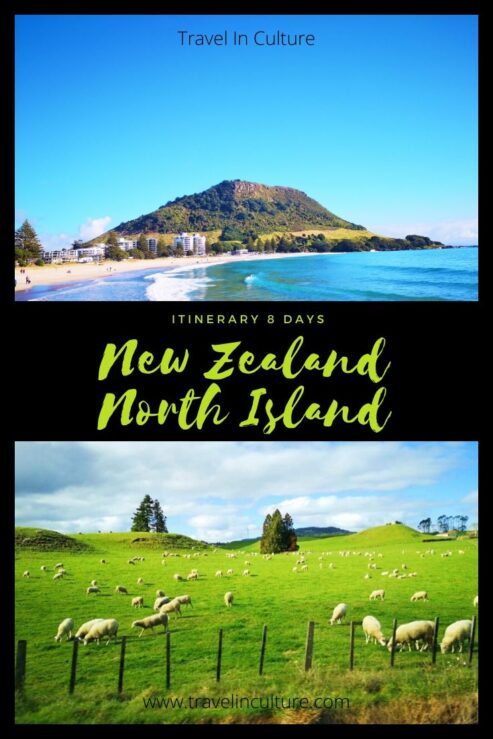
Featured image of
Cities & Things to Do in New Zealand North Island in 8 Days:
Travel In Culture
Cities & Things to Do in North Island New Zealand


